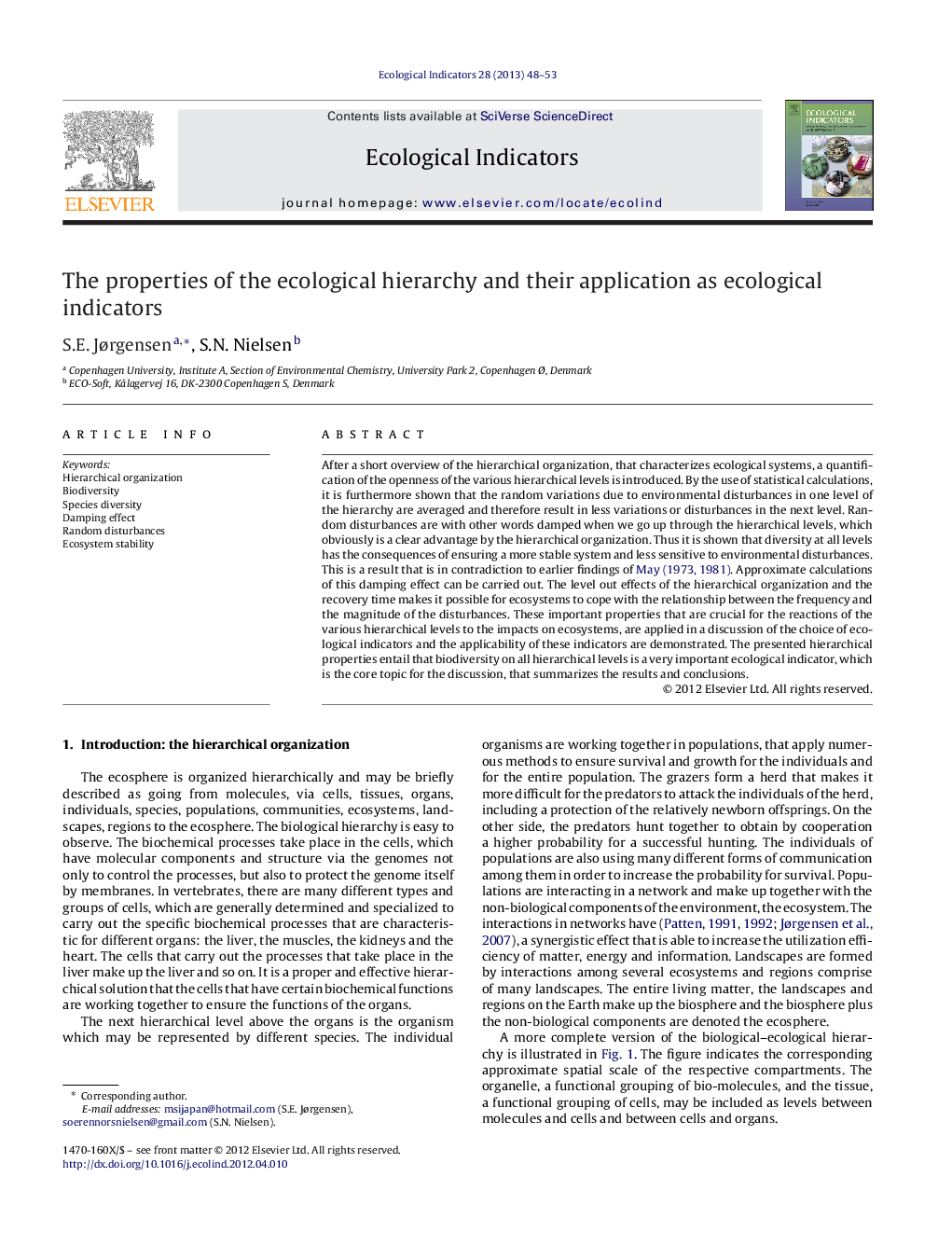| کد مقاله | کد نشریه | سال انتشار | مقاله انگلیسی | نسخه تمام متن |
|---|---|---|---|---|
| 4373544 | 1617172 | 2013 | 6 صفحه PDF | دانلود رایگان |

After a short overview of the hierarchical organization, that characterizes ecological systems, a quantification of the openness of the various hierarchical levels is introduced. By the use of statistical calculations, it is furthermore shown that the random variations due to environmental disturbances in one level of the hierarchy are averaged and therefore result in less variations or disturbances in the next level. Random disturbances are with other words damped when we go up through the hierarchical levels, which obviously is a clear advantage by the hierarchical organization. Thus it is shown that diversity at all levels has the consequences of ensuring a more stable system and less sensitive to environmental disturbances. This is a result that is in contradiction to earlier findings of May, 1973 and May, 1981. Approximate calculations of this damping effect can be carried out. The level out effects of the hierarchical organization and the recovery time makes it possible for ecosystems to cope with the relationship between the frequency and the magnitude of the disturbances. These important properties that are crucial for the reactions of the various hierarchical levels to the impacts on ecosystems, are applied in a discussion of the choice of ecological indicators and the applicability of these indicators are demonstrated. The presented hierarchical properties entail that biodiversity on all hierarchical levels is a very important ecological indicator, which is the core topic for the discussion, that summarizes the results and conclusions.
Journal: Ecological Indicators - Volume 28, May 2013, Pages 48–53